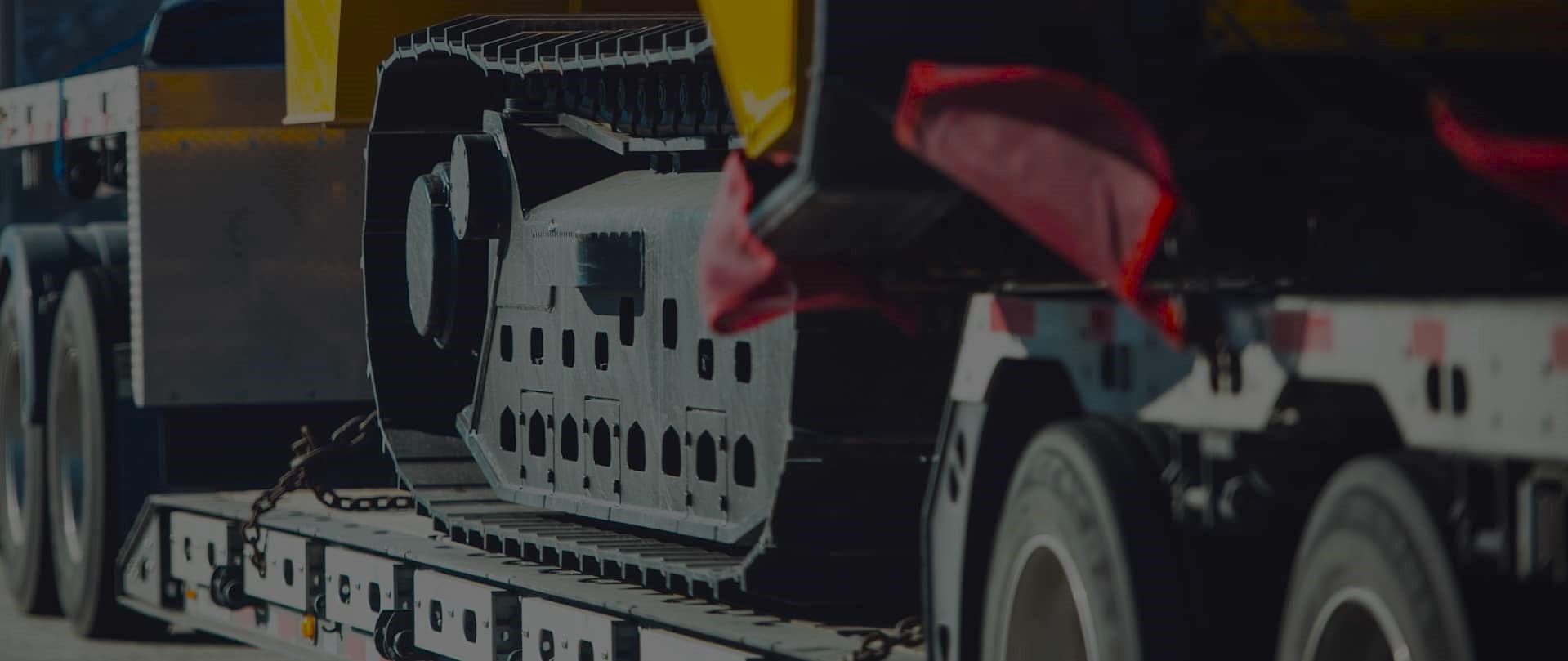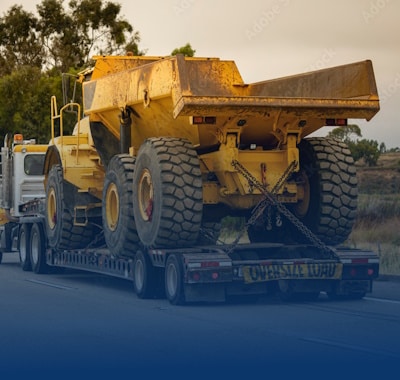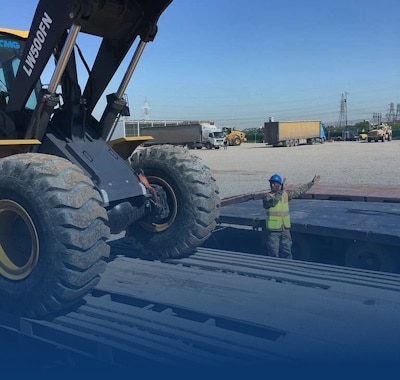Navigating West Coast Heavy Haul Bottlenecks
Freedom Heavy Haul can offer expedited Pickup and Delivery for any size shipment anywhere in the USA. Contact us today for No Hassle, No Pressure Pricing.
Ports and their nearby arterials are the first and last mile of the supply chain. A tentative ILWU-PMA labor deal on February 20 has moved queues, but clearing will take months. That pause collides with spring peak and Chinese New Year arrivals, raising variability for truckers and shippers.
DAT data shows los angeles outbound load-to-truck ratios leapt from 0.3 to 2.2 in a week, then sat near 1.7 into March. During the slowdown, Los Angeles flipped from a headhaul to a near dead-end, forcing long deadheads to Phoenix and Las Vegas.
Global Port Tracker forecasts a 17% year-over-year jump in U.S. containerized imports in March as retailers rebuild inventories. That surge sends ripples from long beach across regional linehaul lanes and local drayage capacity.
This report will map pressure points at major terminals, labor friction, rail delays behind gates, shifting flows to the East Coast, and data-led steps carriers can use. Watch yard turn times, appointment compliance, and gate hour use to cut dwell and protect capacity in real time.
Present-day pressure points at Los Angeles, Long Beach, and Oakland
MarineTraffic and Vizion metrics highlight rising anchor queues and slower clearance at major terminals. Average TEUs off port limits climbed to 51,228 at los angeles long beach and 35,153 at port oakland, totaling about 86,381 TEUs. That offshore build equals roughly $5.2 billion in cargo at stake.
Los Angeles–Long Beach: headhaul volatility and spot market swings
Rapid shifts in los angeles outbound load-to-truck ratios—from 0.3 to 2.2 in a week—show how los angeles long spot markets can rebalance lanes almost overnight. When ratios spike, pricing and routing reset, turning slow lanes into premium local runs in days.
Oakland snapshot: berths, lashers, and terminal slow-and-go impacts
Port oakland’s offshore TEUs and a seven-day clearance near 58% mean fewer effective berths and more dwell variability. Lashers delays and labor friction create short, intense bursts of yard congestion that ripple into longer dwell for containers.
Load-to-truck ratio whiplash and what it signals for trucks and containers
When ratios surge, drivers chase high-paying regional loads and low-margin drays face longer waits and more days to secure moves. Photos from Fenix show on-terminal queues spilling into city corridors, raising truck turns and dispatcher complexity.
- Watch: anchor queue size, seven-day clearance, and daily turn attempts at Fenix and adjacent terminals.
- Near-term outlook: as more ships berth, gate queues may lengthen unless extended hours and yard stacking improve throughput.
Labor friction and terminal productivity: how union dynamics reshape capacity
Job-order gaps and withheld lashers in June tightened moves per hour at major terminals. The PMA reported that from June 2–7 ILWU crews at Los Angeles and Long Beach refused to dispatch lashers, leaving ships idle and exports stranded.
ILWU-PMA flashpoints: withheld lashers, unfilled job orders, and ship idle time
Numbers matter: 260 of 900 job orders went unfilled and 559 registered workers who came to dispatch were denied work opportunities. That translates to fewer gangs on deck and slower shift productivity at ports los nodes.
“Operations generally improved later in LA, Long Beach, and Oakland, but slowdowns persisted in Seattle and Tacoma.”
Containers waiting off port limits: MarineTraffic and Vizion data trends
MarineTraffic showed a marked surge in containers waiting off LA/LB and Oakland. Vizion reported seven-day clearance rates of 62% at Los Angeles and 64% at Long Beach, signaling stretched yard turns.
- Direct effect: withheld lashers and unfilled orders cut terminal moves per hour, stretching time at berth and clogging stacks.
- Capacity chain reaction: when ships sit, berths lock up and containers pile, creating unpredictable truck waves for local dispatch.
- Risk management: with only a tentative labor agreement framework, planners should scenario-plan for short-notice slowdowns.
- Tip for carriers: build flexible slotting and buffer time into dispatch to limit missed turns and detention.
Data signals to watch now: demand, dwell, and rate momentum
Monitor short-term signals: DAT‘s load-to-truck swings often flag imminent rate changes. Small moves on those boards can show when local pricing will tighten, giving carriers and shippers time to respond.
The recent run-up in los angeles outbound ratios—from 0.3 to 2.2 in a week and holding near 1.7 through March—follows earlier peaks near 6.7. Combine that with Global Port Tracker’s near 17% import rise year-over-year and you get clear pressure on yard and dray capacity.
From backlog to throughput: DAT ratios, volume surges, and seasonal overlap
Clearing stacked vessels can create a 25–41 day lag as containers move from ship to warehouse to truck. That lag often overlaps with California and Southeast reefer season, multiplying demand for chassis and refrigerated capacity.
- Track ratios: load-to-truck is an early indicator of rate momentum.
- Watch volume spikes: seasonal surges strain limited dray and yard resources at key ports.
- Translate data into dispatch: prioritize reliable appointment slots and avoid peak gate windows when days-to-pick rise.
- Use telemetry: DAT boards, terminal turn dashboards, and yard cams to redeploy drivers away from low-yield turns.
“Expect spot relief to lag throughput gains by a week or two as containers exit stacks and chassis cycles normalize.”
Map the 25–41 day lag across your supply chain and pre-book capacity for critical lanes. Small operational wins—earlier gate entries, split chassis staging, and live prompts—shave minutes off each turn and keep freight moving.
Rail bottlenecks behind the gates: when on-dock rails meet limited cars
Railcar shortages are forcing boxes to sit longer on terminal rails, raising stack times and tying up chassis. At ports los angeles the rail-bound dwell averages 7.5 days; at long beach it is just over 8 days. About 60% of long-dwelling containers are slated for rail.
Land capacity sits near 90%, well above the efficient 70–75% range. Once yards cross 75% capacity, moves slow, queues lengthen, and truck idle time rises. That dynamic increases local congestion and reduces weekly turns.
Pacific Northwest pinch points and inland routing choices
Seattle shows import dwell above 16 days and Tacoma about 8 days. Ocean carriers that concentrate routing on single inland ramps can worsen localized pileups. More diversified ramps spread load but keep boxes inland longer.
- Why it matters: on-dock rail limits raise stack time and tie up chassis that dray fleets and the local truck market need to cycle.
- Realistic outlook: BNSF’s extra locomotives, Chicago turns, and 3,000 hires should improve velocity gradually, not instantly.
“Limited railcar availability can lead to stacking that blocks new imports and increases vessel dwell.”
Practical steps: pre-stage tractors, time ETAs to post-rail release windows, and keep tight comms with terminals to catch short surges. These moves ease pressure at key west coast ports and other major ports.
Shifting cargo to East Coast ports and the Panama Canal cost equation
More shippers are steering cargo toward east coast terminals to lock in berth time and rail options. Xeneta data showed container spot rates jumped about 15% in early June as multiple disruptions, including low-water limits at the Panama Canal, squeezed capacity.
Rerouting trade-offs: canal fees, draft limits, and added transit days
Canal transits now carry draft and weight limits plus per-container surcharges. For example, Hapag-Lloyd has cited roughly $260 per box, while CMA CGM listed about $300. These fees alter the math for diversions.
Direct reroutes to Houston can add 12–18 days to door-to-door time, but they can stabilize ETA risk. NY/NJ imports climbed 11.5% Jan–May, with an estimated 6.5% shift from los angeles and long beach.
- Why pivot: perceived reliability, open berth windows, and strong rail links to inland markets.
- Canal math: draft caps can force longer routes around South America if weights exceed thresholds.
- Time vs cost: extra days may raise landed cost and detention risk even as schedule certainty improves.
Ports like Savannah and Norfolk are taking ad hoc calls. Savannah expects about 155 July vessel calls with many unplanned and around 10 days at anchorage. Norfolk has used on-dock rail to move boxes inland and even back west when needed.
“A serious work stoppage at LA/LB would ripple into pricing and inventory strategies.”
Quick checklist: confirm ocean carriers’ diversion rules, pre-book inland rail slots, and set clear thresholds for waiting offshore versus diverting. Mix allocations across east coast ports and your original west coast port plan to balance risk and cost.
West Coast heavy haul bottlenecks through port-adjacent roads: what’s next for shippers and carriers
Expect lingering variability at terminals as rail-bound dwell near los angeles runs about 7.5 days and long beach edges a little over 8 days. Land capacity sits around 90%, well above the efficient 70–75% range.
Use appointment windows, sequence pickups by grounded status, and pre-assign truck power to boxes likeliest to release in hours. Tighten SOPs on chassis swaps, pre-clear customs, and benchmark days-in-yard to catch rising dwell fast.
Blend allocations across los angeles, long beach, and select alternate ports while watching Vizion and DAT clearance numbers. Model labor agreement shocks, keep contingency carriers warm, and set triggers to pivot cargo to rail or other gateways.
By marrying live data with disciplined operations, freight teams can protect margins, limit detention, and move the most valuable cargo first.







